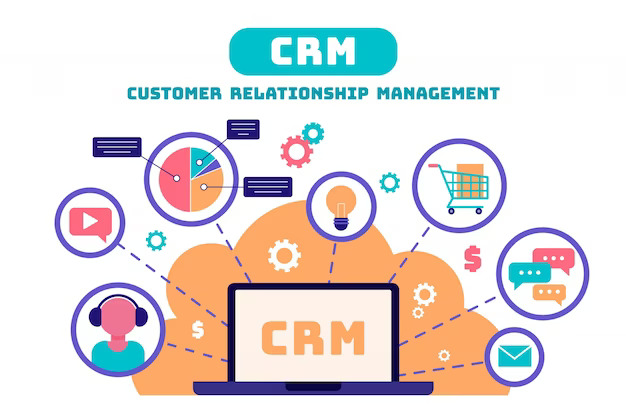How CRM and Marketing Automation Work Together to Boost Your Business
Do you want to generate more leads, close more deals, and grow your business faster? If you do, then you need to use two powerful tools: CRM and marketing automation software. In this post, you’ll learn what CRM and marketing automation software do, why they need each other, and how to integrate them successfully.
What is Marketing Automation Software?
Marketing automation software is a tool that automates and optimizes various marketing tasks, such as email marketing, lead nurturing, social media marketing, and analytics. Marketing automation software can help you save time, increase efficiency, personalize your messages, and measure your results.
Some of the benefits of using marketing automation software are:
- You can automate repetitive and tedious tasks, such as sending emails, posting on social media, and updating your website.
- You can segment your audience based on their behavior, interests, and preferences, and send them relevant and customized messages.
- You can track and analyze your marketing performance, such as open rates, click-through rates, conversions, and revenue.
- You can optimize your marketing campaigns, such as testing different headlines, images, and calls to action, and finding the best ones.
What is CRM Software?

CRM software is a tool that manages and tracks your interactions with your prospects and customers, such as contact information, communication history, and sales pipeline. CRM software can help you improve customer relationships, increase retention, boost sales, and gain insights.
Some of the benefits of using CRM software are:
- You can store and organize your customer data, such as name, email, company, and industry, in one place.
- You can record and access your communication history, such as emails, calls, and notes, with your prospects and customers.
- You can manage and monitor your sales pipeline, such as leads, opportunities, and deals, and forecast your revenue.
- You can generate and share reports and dashboards, such as sales activities, customer satisfaction, and team performance.
How Do CRM and Marketing Automation Software Work Together to Streamline the Lead Generation and Qualification Process?
Marketing automation and CRM software can work together to streamline the lead generation and qualification process, by automating, optimizing, and tracking various marketing and sales tasks. Here is how the two software work together:
- Marketing automation software can capture and nurture leads from various sources and channels, such as web forms, landing pages, and social media. It can also score and qualify the leads based on their behavior, such as opening emails, clicking links, and visiting pages.
- CRM software can store and organize the lead data, such as name, email, company, and industry. It can also sync and share the lead data with the marketing automation software, such as lead score, behavior, and stage.
- The two software can trigger actions and workflows based on the lead data, such as sending emails, assigning tasks, and updating deals. For example, when a lead fills out a web form, the marketing automation software can send an email to the lead, and the CRM software can create a contact and a task for the sales rep.
What are the Benefits of Integrating CRM and Marketing Automation Software?
Integrating marketing automation and CRM software can bring many benefits, such as efficiency, personalization, time, better visibility, shortened sales process, consistent messaging, enhanced pipeline management, and minimized human error. Let’s dive in:
1. Efficiency
You can eliminate manual and repetitive tasks, such as data entry, email sending, and follow-up. You can also reduce the number of tools and platforms you need to use, and have everything in one place.
2. Personalization
You can tailor your messages and offers based on the lead’s profile, preferences, and behavior. You can also deliver the right content and value proposition at the right time, based on the lead’s readiness and interest.
3. Time
You can reach out to the right leads at the right time, based on their lead score and stage. You can also save time and resources by focusing on the most qualified and profitable leads and customers.
4. Better Visibility
You can have a clear and comprehensive view of your leads and customers, such as their activities, interactions, and feedback. You can also see how your marketing and sales efforts are impacting your business outcomes, such as lead generation, conversion, and revenue.
5. Shortened Sales Process
You can accelerate the sales cycle and increase the conversion rate, by providing timely and relevant information and guidance to your leads and customers. You can also align your marketing and sales goals and strategies, and move your leads and customers through the funnel faster and smoother.
6. Consistent Messaging
You can ensure that your marketing and sales teams are aligned and coordinated, and that your leads and customers receive consistent and coherent messages across different channels and stages. You can also build trust and credibility with your leads and customers, and increase their loyalty and advocacy.
7. How CRM and Marketing Automation can Enhance Pipeline Management
You can optimize and manage your sales pipeline, by prioritizing and qualifying your leads, and tracking and forecasting your deals. You can also identify and address any bottlenecks or gaps in your pipeline, and improve your sales performance and productivity.
8. Minimized Human Error
You can reduce the risk of human error and data inconsistency, by automating and integrating your marketing and sales processes and data. You can also ensure that your data is accurate, complete, and up-to-date, and that your actions and workflows are executed correctly and timely.
What are Some Tips and Best Practices for Integrating CRM and Marketing Automation Software?

Integrating marketing automation and CRM software can bring many benefits, but it also requires some planning and preparation. Here are some tips and best practices for integrating marketing automation and CRM software:
- Choose compatible and reliable software that can integrate seamlessly and securely. You can look for software that have native integrations, or use third-party tools or APIs to connect them. You can also check the reviews and ratings of the software, and ask for demos and trials before you buy them.
- Define your goals and metrics for the integration, such as lead generation, conversion, and revenue. You can also align your marketing and sales objectives and expectations, and set clear and realistic targets and timelines. You can also measure and monitor your integration results, and adjust and improve your integration strategy as needed.
- Map out your lead generation and qualification process, such as lead sources, lead stages, and lead criteria. You can also define your lead scoring and segmentation rules, and your lead nurturing and follow-up strategies. You can also create and test your marketing and sales campaigns, and your actions and workflows.
- Test and monitor your integration, such as data quality, data flow, and data accuracy. You can also check for any errors, glitches, or delays in your integration, and fix them as soon as possible. You can also review and update your integration settings and configurations, and ensure that your integration is running smoothly and securely.
Conclusion
You’ve learned why CRM and marketing automation software need each other, and how to integrate them successfully. You’ve also learned how integrating these tools can boost your lead generation, conversion, and revenue. Now, you might be wondering how to get started with CRM and marketing automation software. That’s where we can help.
We are OnextDigital, a white label software service provider that specializes in CRM and marketing automation solutions. We can help you design, develop, and deploy customized CRM and marketing automation software that suits your business needs and goals. Moreover, we can also help you manage and maintain your software, and provide you with ongoing support and training. Don’t miss this opportunity to grow your business faster and smarter with CRM and marketing automation software. Contact us today.




